CCS Chargers - The Ultimate Guide
Introduction
While most electric vehicle (EV) charging—about 80%—happens at home, Combined Charging System (CCS) chargers play a vital role in providing quick top-ups during long road trips. In a vast country like the US, the ability to rapidly charge an EV is essential, especially for covering long distances. The CCS charging infrastructure enables fast charging and makes electric vehicles more practical for such journeys.
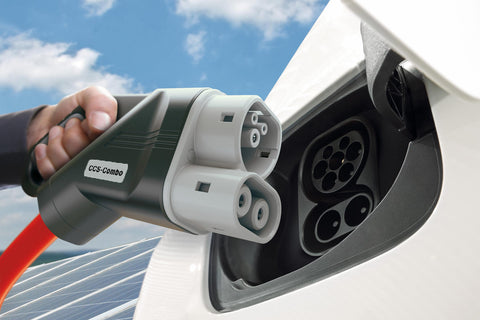
When the industry developed the CCS standard, the goal was to have a single connector type for both AC and DC charging. This universal connector was intended to be used by all EV manufacturers, promoting compatibility across the EV charging ecosystem.
Chapter 1: Understanding CCS Chargers
What is CCS (Combined Charging System)?
The CCS is a standardized system designed for fast-charging electric vehicles. It brings together alternating current (AC) and direct current (DC) charging into a single connector, ensuring compatibility with a wide range of EVs. CCS uses the Level 2 charger as its base, adding two extra DC power lines which enable it to carry a higher voltage compared to the regular connector. If you're using a standard Type 2 charger, the bottom two holes on the connector remain unused because they're only for the CCS plug.
In the US, CCS connectors are the primary high-speed chargers found in public charging stations. In a fast-paced country, the need for quick on-the-road top-ups has never been more apparent. According to S&P Global Mobility, there are currently around 20,000 fast charging ports nationwide, which is not enough to cater to the growing EV market share for new vehicles. By 2030, it's estimated that EVs will account for 40% of cars on the road, which translates to approximately 28.3 million EVs in operation.
Analysts predict that around 172,000 DC EV chargers will be needed to meet the charging demands by the same year. This means the US must quadruple this number between 2022 and 2025 to meet the immediate charging needs. By 2027, about 109,000 fast chargers will need to be deployed across the country to keep up with the escalating demand for electric car and charging points.
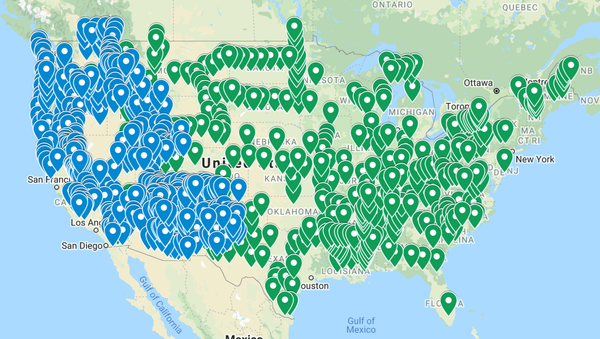
EV Charging Infrastructure Plan For Biden Administration. Interstate stations are in GREEN and rural stations are in BLUE. Image courtesy of Clean Technica
The need for this extensive charging infrastructure is not only a reflection of growing EV ownership but also an essential component for encouraging the widespread adoption of electric cars. CCS technology, with its compatibility, convenience, and fast charging capabilities, plays a pivotal role in addressing this challenge by facilitating a seamless charging experience for EV drivers.
Benefits of CCS chargers for EV drivers
-
Fast Charging: DC fast chargers are capable of delivering up to 350 kW of power output, significantly reducing charging times compared to traditional AC chargers. This is particularly crucial for long-distance travel, as it minimizes the time spent at charging stations, making EVs more practical for everyday use.
-
Convenience: The CCS connector combines both AC charging and DC charging, simplifying the charging process for EV owners. Drivers do not need to choose between different types of connectors or stations, as CCS chargers can handle various EV models with the same rapid charging connector.
-
Widespread Compatibility: CCS chargers have become a standardized solution in the US, compatible with a wide range of EV makes and models. This compatibility ensures that EV drivers can easily find and use a CCS charging station, reducing any concerns about charger compatibility.
-
Range Assurance: The availability of CCS chargers across the United States, often located along highways and in urban areas, provides EV drivers with the confidence to take longer trips. The convenience of fast charging and the widespread charging infrastructure contribute to reduced range anxiety.
-
Public Charging Networks: Major charging network providers have adopted CCS technology, resulting in an extensive network of CCS charging stations. This means that EV drivers have reliable access to charging infrastructure, ensuring that they can charge their vehicles both locally and during cross-country trips.
Types of CCS Chargers

Image courtesy of Interchargers
There are two primary types of CCS (Combined Charging System) connectors:
-
CCS Combo 1 (CCS1): This type is commonly used in North America and Japan. It combines the standard SAE J1772 connector for Level 2 AC charging with the CCS DC fast-charging connector.
-
CCS Combo 2 (CCS2): CCS Combo 2, also known as IEC 62196-3, is the European version of CCS. It combines the Type 2 connector for Level 2 AC charging with the CCS DC fast-charging connector.
The main difference between these two types is the AC connector (J1772 for CCS1 and Type 2 for CCS2) and the region where they are commonly found. Both types use the same style of CCS connector for DC fast charging, ensuring compatibility for high-speed charging.
Chapter 2: CCS Charging Speed and Capabilities
AC vs. DC Chargers
AC Chargers
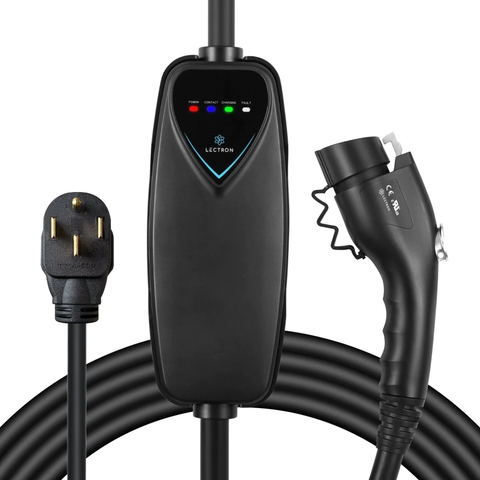
-
Charging Method: AC chargers provide power to the electric vehicle using alternating current, which is the type of electricity typically found in household outlets.
-
Charging Speed: AC chargers are generally slower than DC chargers. They are commonly used for Level 1 and Level 2 charging. Level 1 charging typically involves plugging your EV into a standard household outlet, which is the slowest option. Level 2 charging uses dedicated charging equipment and provides faster charging than Level 1 but is still slower than DC fast charging.
-
Use Cases: AC chargers are suitable for overnight or longer-duration charging, such as when your EV is parked at home, at work, or at destinations like shopping centers. They are not ideal for rapid or long-distance charging.
DC Chargers
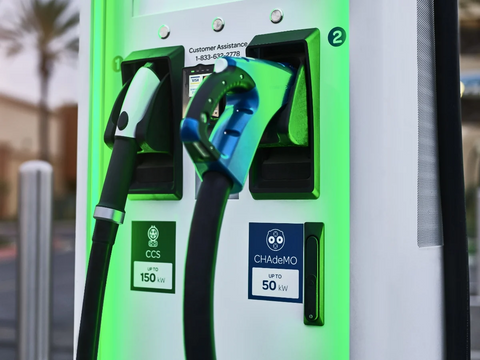
-
Charging Method: DC chargers provide power to the electric vehicle using direct current, which is the type of electricity used in the vehicle's battery.
-
Charging Speed: DC chargers are significantly faster than AC chargers. They are the primary choice for rapid charging and long-distance travel. DC fast chargers, such as those used with CCS, provide high power levels, enabling EVs to charge quickly. Charging speeds can vary, but many DC fast chargers can provide a substantial amount of range in a relatively short time, often around 30 minutes to reach an 80% charge.
-
Use Cases: DC fast chargers are strategically located along highways and in urban areas to facilitate long-distance travel and quick top-ups. They are ideal for drivers who need to charge their EVs quickly, making it possible to continue their journey without significant delays.
Chapter 3: Where to Find CCS Chargers in the US
CCS Charger Networks
Here are some prominent CCS charger networks in the US:
-
Electrify America: Electrify America is one of the largest and most recognized CCS charger networks in the United States. They have deployed high-speed charging stations across the country, particularly along major highways, offering fast and convenient charging.

-
EVgo: EVgo operates an extensive network of fast-charging stations, including CCS fast chargers. They are commonly found in urban and suburban areas, making them accessible for daily charging needs.

-
ChargePoint: ChargePoint is a widely used charging network with a mix of Level 2 chargers and DC fast chargers, including CCS units. The charging stations are located in various settings, from businesses to public locations.
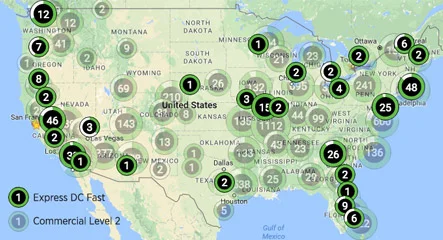
To find CCS charging stations in different states, consider these tips:
-
Use Charging Apps: Utilize charging station locator apps and websites that provide real-time information about the availability and location of CCS charging stations. Popular apps include PlugShare, ChargePoint, and Electrify America's app.
-
Check with Charger Networks: Visit the websites or use the apps of the major CCS charger networks mentioned above to search for charging locations, view availability, and access additional information, such as charging rates.
-
Plan Your Route: Before embarking on a long journey, plan your route using EV trip planning tools that can help you identify CCS charging stations along the way. This ensures you have a charging strategy in place.
-
Consult Your Vehicle's App: Some electric vehicle manufacturers provide apps that assist drivers in locating charging stations. These apps often include CCS chargers.
-
Verify Charging Compatibility: Before heading to a charging station, ensure that your EV is compatible with the CCS connector used by the network. Not all CCS chargers may work with every EV model.
Chapter 4: How to Use CCS Chargers
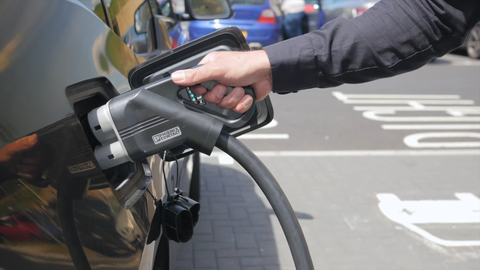
Image courtesy of electrive
How to Charge Your EV with CCS
-
Locate a CCS Charger: Find a CCS charging station using a charging station locator app, website, or your EV's built-in navigation system. You can also check the compatibility of the charger with your EV model.
-
Park and Prepare: Park your EV in front of the CCS charger, ensuring that the charging cable can reach your vehicle's charging port. Make sure your EV is turned off or in "park" mode.
-
Unlock the Charger: Some chargers require you to scan a QR code, use an app, or tap a card to initiate the charging session. Follow the instructions provided by the charger's operator.
-
Open the Charging Port: If your EV has a locked charging port, unlock it using your key fob or through the vehicle's touchscreen control panel.
-
Connect the Cable: Grab the CCS charging cable and insert it into the CCS connector on your vehicle. The connector should click into place securely.
-
Initiate Charging: Once the cable is securely connected, confirm the charging session on the charger's interface or through the app. Follow the prompts to start the charging process.
-
Charging Progress: Monitor the charging progress on the charger's screen or app. It typically displays information such as charging speed, time remaining, and energy delivered.
-
Safety Precautions: While your EV is charging, it's essential to follow safety guidelines. Stay near your vehicle, avoid leaving it unattended, and be mindful of the charging cable to prevent tripping hazards.
-
Ending the Session: When your EV is adequately charged or when you're ready to continue your journey, end the charging session. This may involve using the charger's interface, app, or tapping a card again.
-
Disconnect the Cable: Once the charging session is terminated, carefully remove the CCS connector from your EV. Place the cable back in its holder or the charger's designated area.
-
Close the Charging Port: Securely close and lock your EV's charging port, if applicable.
-
Payment: If the charger requires payment, follow the provided instructions to make your payment. This may involve scanning a QR code or using an app.
-
Leave the Charging Station: Once you've safely disconnected your EV from the charger and made any necessary payments, you're ready to continue your journey. Make sure to leave the charging station as you found it.
CCS Charger Compatibility
CCS chargers are designed to be compatible with various EV models available in the United States. Compatibility is primarily determined by the type of CCS connector used (CCS1 or CCS2), which aligns with the regional charging standards. EV manufacturers ensure that their vehicles are equipped with the appropriate CCS connector for their intended markets.
CCS1 connectors are typically used in North American and Japanese EVs, while CCS2 connectors are more common in European vehicles. As a result, CCS chargers in the US are equipped with CCS1 connectors, making them compatible with the majority of EVs available in the American market.
Chapter 5: Future of CCS Charging in the US
Upcoming Developments
The inclusion of CCS in the National Electric Vehicle Infrastructure (NEVI) program, as well as the federal government's requirement for car charging companies to include CCS connectors, demonstrates the government's commitment to support CCS technology in promoting electric vehicle (EV) adoption in the United States. The $7.5 billion allocated for EV promotion highlights the importance of CCS infrastructure in the country's future green transportation.
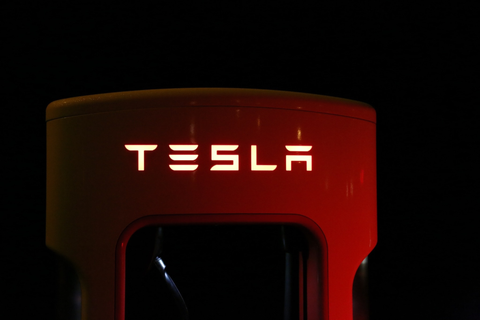
The recent expansion of Tesla's Supercharger network to non-Tesla drivers, including participation from major car manufacturers such as Ford, GM, Nissan, and others, is an important step toward further CCS standards and interoperability among automotive manufacturers. This partnership demonstrates that the industry understands the need for a more uniform charging ecosystem, allowing EVs from different manufacturers to share the same charging infrastructure.
Despite competition and alternative electric vehicle charging options such as Tesla's Superchargers, CCS remains the most widely used fast-charging standard for electric vehicles worldwide. This widespread adoption reflects the electric motor industry's acceptance of CCS as a versatile and adaptable fast-charging technology.
Conclusion
The Combined Charging System (CCS) chargers have emerged as a pivotal player in electrification in the US. The technology not only enables fast and convenient charging for EV owners but also addresses the challenge of building an extensive and adaptable charging infrastructure across the country. With the growing adoption of EVs, the need for a seamless and standardized charging experience becomes more apparent than ever. CCS chargers have risen to this challenge by offering fast charging, widespread compatibility, and the assurance of extended range for EV drivers.
Best Lectron Products for Multi-Network Charging
Trusted by 1M+ drivers; featured in


